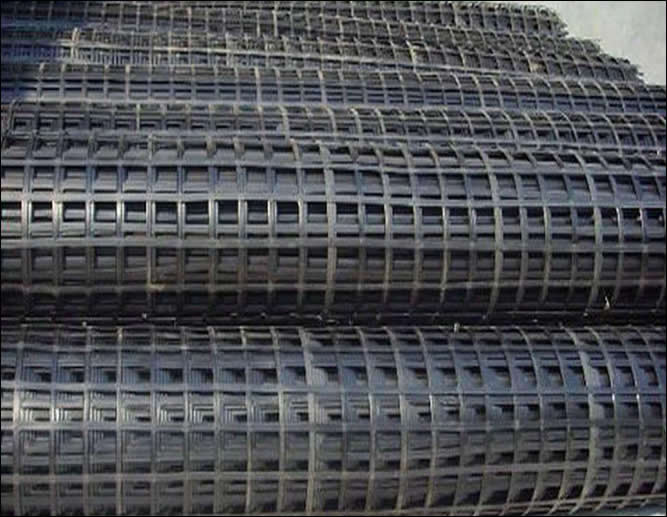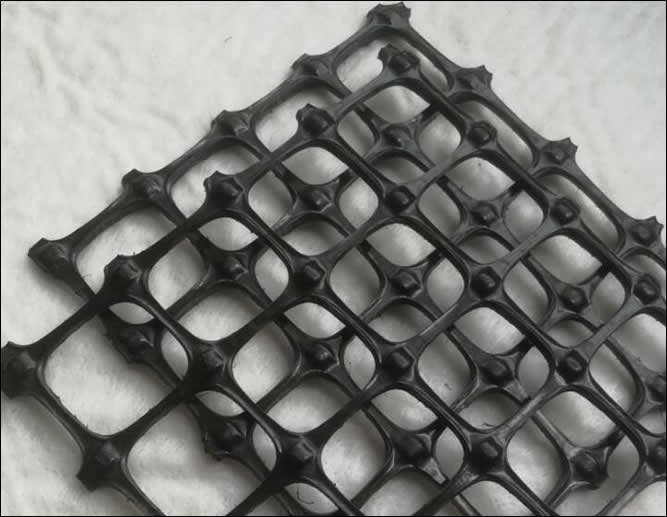Geomaster supplies Plastic geogrids for soil reinforcement: polypropylene geogrids, polyethylene geogrids
Plastic geogrids are made of square or rectangular polymeric meshes through a process of stretching extruded sheets of polymeric material (typically HDPE or high-density polyethylene) under heated conditions.
Types:
Plastic geogrids can be divided into PE and PP geogrids according to polymer materials.
Plastic geogrids can be divided into Biaxial and uniaxial geogrids according to structures.
HDPE Polyethylene Geogrids Mesh

Polyethylene plastic geogrids are designed for use in ground stabilization, soil reinforcement, and erosion control. It consists of a grid mesh made from strips of polyethylene fused together to form a flexible net-like structure. The mesh geo grid is widely used in the construction and engineering industry, providing effective soil stabilizing beneath a structure and reducing deformation due to external forces such as wind and water.
Plastic (polypropylene grade) Geogrid

Biaxial plastic geogrids of Extruded pvc (polypropylene) netting made of high molecular polymer, featuring high tensile strength, both longitudinally and in the transverse direction.
Comparing plastic geogrids according to the different materials: (High density) polypropylene, polyethylene, or polyvinyl alcohol.
Polypropylene ( PP) Geogrids:
Polypropylene geogrids are also known as PP types plastic geogrids. This type of geogrid is extremely strong, lightweight, and resistant to UV radiation, corrosion, and oxidation. Polypropylene geogrids have excellent flexural properties and are suitable for use in both temporary and permanent applications. Common uses of polypropylene geogrids include soil reinforcement, retaining walls, and erosion control.
Polyethylene or HDPE Geogrids:
Polyethylene geogrids are made of polyethylene into a grid-like pattern. HDPE grids are extremely durable and are resistant to UV radiation and temperature extremes, offering better corrosion resistance over PP geo grids. The flexibility of polyethylene geogrids makes them ideal for use in a variety of applications ranging from erosion control to earthworks. Polyethylene geogrids are also used to reinforce asphalt and concrete pavements.
Polyvinyl Alcohol (PVA) Geogrids:
PVA geogrids are made from polyvinyl alcohol (PVA) resins. PVA geogrids are very strong and stable yet highly flexible, making them ideal for use in reinforcing roads, embankments, and retaining walls. PVA geogrids are also resistant to chemicals, perfect for use in areas where petroleum- or acid-based products may be present. PVA geogrids are often used in combination with other geogrids to increase performance and reduce costs.
When selecting a plastic geogrid, it is important to consider the application and the desired results. Factors to consider include strength, flexibility, abrasion resistance, UV radiation resistance, chemical resistance, and overall cost.
